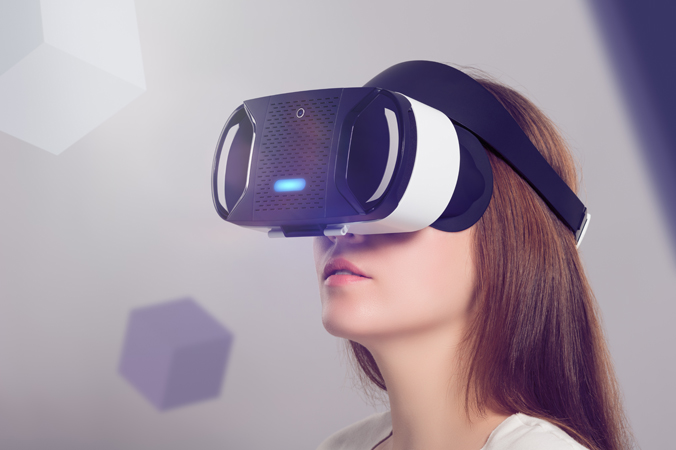Virtual reality-based CBT helps reduce paranoia, anxiety in psychotic disorders
Adding virtual reality-based cognitive behavioral therapy to regular treatment can help ease paranoid thoughts and anxiety in patients with psychotic disorders, according to findings published in The Lancet Psychiatry.
“Exposure-based therapeutic exercises for paranoid ideation have several limitations. Many patients are reluctant or unable to undergo exposure because of strong paranoid fears or negative symptoms,” Roos M. C. A. Pot-Kolder, PhD candidate, department of clinical psychology, VU University and Amsterdam Public Health Research Institute, Netherlands, and colleagues wrote. “[Previous] findings suggest that virtual-reality-based CBT could be an effective, affordable, acceptable and accessible form of treatment for patients with paranoid ideation and social withdrawal.”
In a randomized controlled trial, researchers examined the effects of virtual-reality-based CBT on paranoid thoughts and social participation among 116 adult outpatients of seven Dutch mental health centers with diagnosed psychotic disorder. They randomly allocated (1:1) patients to receive either virtual-reality CBT in addition to treatment as usual or their regular treatment only. Participants underwent 16 individual 1-hour therapy sessions over 8 to 12 weeks of virtual-reality CBT, which featured four controlled virtual environments (a street, bus, café and supermarket) and exercises completed with the guidance of a therapist. Researchers examined changes in social participation momentary paranoia, perceived social threat and momentary anxiety at baseline, after treatment (3 months later) and at 6-month follow-up.

After 3 months of treatment, researchers found that virtual reality CBT significantly reduced momentary paranoid ideation (P < .0001; effect size = –1.49) and momentary anxiety (P = .0002; –0.75) compared with usual treatment, and these improvements were maintained for 6 months. However, virtual reality CBT did not increase the amount of time spent with other people after 3 months compared with treatment as usual. The virtual reality CBT group also experienced improvements in safety behaviors and social cognition problems at 3 and 6 months, possibly because participants were more attentive and gained more social information from the situation, reducing the likelihood of them incorrectly perceiving a threat and becoming paranoid, according to the researchers. There were no adverse events in the virtual reality CBT group.
“The addition of virtual reality CBT to standard treatment reduced paranoid feelings, anxiety, and use of safety behaviors in social situations compared with standard treatment alone,” Pot-Kolder said in a press release. “While we did not find that this therapy increased the amount of time that participants spent with others, we are hopeful that once patients feel more comfortable in social situations and learn that other people are less threatening than anticipated, they might make and maintain social contacts, and find hobbies and jobs. However, more research will be needed before the treatment becomes widely available in the clinic.”
Although this study suggests using virtual reality CBT can benefit patients with psychotic disorders, future study should more closely examine which aspects of virtual social interaction are key to improvements, according to a related comment written by Kristiina Kompus, PhD, department of biological and medical psychology, University of Bergen, Norway.
“It seems natural to presume that the effect of virtual reality during therapy sessions depends on what exactly the patients do in that virtual environment,” Kompus wrote. “Nevertheless, this study adds to the evidence suggesting that virtual reality can be a useful tool to help patients with psychotic disorders.” – by Savannah Demko
Disclosures: The authors report no relevant financial disclosures. Kompus reports no relevant financial disclosures.
